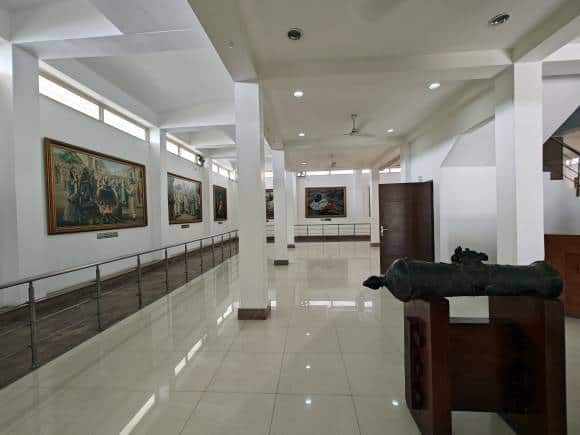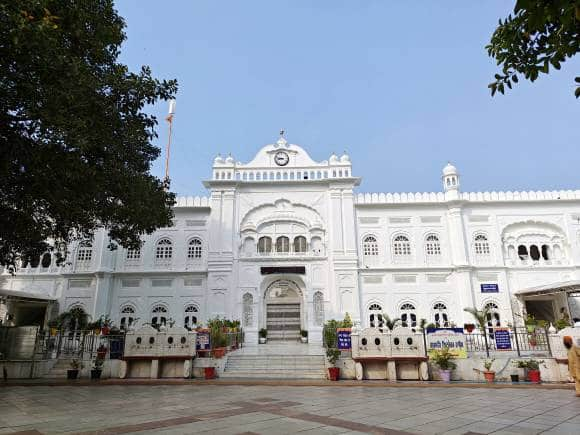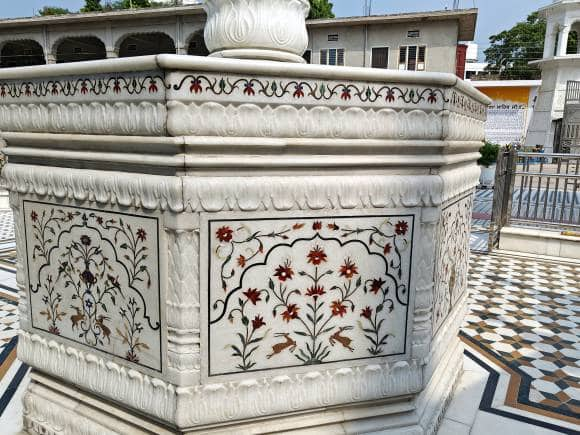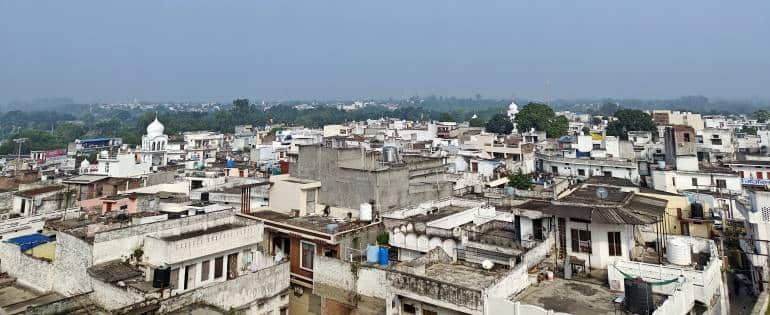



The Bhakra Nangal dam — is a vivid memory from my school’s history textbook, many moons ago and I finally saw a glimpse of it on my recent visit to Anandpur Sahib.
Nature-inspired
 The Sutlej River at Anandpur Sahib. (Photo: Bindu Gopal Rao)
The Sutlej River at Anandpur Sahib. (Photo: Bindu Gopal Rao)
“Would you like to see how we process the milk at our outlets?”, asks Pritpal Singh who works at The Punjab State Cooperative Milk Producers’ Federation Limited and is showing me around his hometown. This is in response to my comment on the freshness of the milk products of ‘verka’ the brand under which the Government sells its dairy produce. When I answer with an excited nod, he stops at one of the outlets located next to a beautiful waterbody and explains the process of milk collection, quality check and transport to a central facility for further processing. This is my first introduction to Anandpur Sahib, often dubbed as the birthplace of 'Khalsa' (people who practice Sikhism) and one of the five sacred takhts (seats) of Sikhism. However, it is the serenity of this place, where nature is at its pristine glory that makes it worth a visit. The Sutlej River flows in and around the city, and the Shivalik mountain range borders the eastern part of the city that gives it some amazing views as well.
Museum musings
My first stop is at India’s most visited museum, the Virasat-e-Khalsa, which is a tech enabled space (think mobile apps, audio guides) that showcases the heritage of the Khalsa and its influence on the history and culture of Punjab. The architecture of the external façade is something that is quite breath-taking courtesy the beige hued structure with concave-shaped receptors in stainless steel. Designed by famed architect Moshe Safdie, the museum is spread over 120 acres with a built area of 40 acres. The sprawling lawns meandering around the water bodies set the stage for what to expect inside. The exhibits are displayed in multiple galleries and are a combination of relief paintings, hand-painted murals, dioramas, and 3D panels and handmade tapestries that reflect the culture and spirit in Punjab.
 Virasat-e-Khalsa, Anandpur Sahib, Punjab. (Photo: Bindu Gopal Rao)
Virasat-e-Khalsa, Anandpur Sahib, Punjab. (Photo: Bindu Gopal Rao)
 Sri Guru Tegh Bahadur Sikh Museum. (Photo: Bindu Gopal Rao)
Sri Guru Tegh Bahadur Sikh Museum. (Photo: Bindu Gopal Rao)
I also suggest you stop by the Sri Guru Tegh Bahadur Sikh Museum, built in 1983 to mark the 300th anniversary of his martyrdom that has several relics and artefacts from the past. The museum displays a series of paintings by eminent artists, S Kirpal Singh, S Jaswant Singh, and S Devinder Singh and reflect his tenets of religious tolerance, freedom of conscience and worship.
Architecture meets spirituality
 Gurdwara Takht Sri Kesgarh Sahib, Anandpur Sahib, Punjab. (Photo: Bindu Gopal Rao)
Gurdwara Takht Sri Kesgarh Sahib, Anandpur Sahib, Punjab. (Photo: Bindu Gopal Rao)
The main Gurdwara here is the Gurdwara Takht Sri Kesgarh Sahib located at the site where Guru Gobind Singh used to hold his congregations. The pristine white façade is home to sacred weapons of three Gurus and is a great place to feel a sense of calmness. The upper level of the Gurdwara gives a nice view of the city and the white dome-like structures that dot the landscape. The other important spiritual sites are the Gurdwara Sis Ganj Sahib, the site where Guru Teg Bahadur was cremated, Gurdwara Guru Ka Mahal, Gurdwara Bhora Sahib and Gurdwara Akal Bunga Sahib. Do not miss the brilliant architecture at each of these places including the fine inlay marble work on the pillars that are intricate and colourful.
 Inlay work at Gurdwara Takht Sri Kesgarh Sahib. (Photo: Bindu Gopal Rao)
Inlay work at Gurdwara Takht Sri Kesgarh Sahib. (Photo: Bindu Gopal Rao)
Do more
If you are here in March, do not miss the annual festival of Hola Mohalla, an ode to the martial spirit of the people here. This is how the colourful festival of 'Holi' is celebrated when there are large processions of people who don traditional clothes and carry weapons. The Holgarh fort sees most of the action that includes horse riding, sword wielding, and other martial games and the city transforms into a hub of activity. Located 38 km away is the Bhakra Nangal Dam, the second largest water reservoir in India and a stop at the Nangal Wildlife Sanctuary is also a good idea. Nature lovers can also check out the Jhajjar Bachauli Wildlife Sanctuary on the foothills of Shivalik with prior permission from the forest department located about five kilometres away.
 Aerial view of Anandpur Sahib, Punjab. (Photo: Bindu Gopal Rao)
Aerial view of Anandpur Sahib, Punjab. (Photo: Bindu Gopal Rao)
If you have time, you can also visit Ropar, the excavation site of the Indus Valley Civilization and an Archaeological Museum that showcases some of the artefacts excavated. And of course, no trip is complete without a meal of typical Punjab cuisine and there are many options that the city offers from the quintessential Dhaba’s to the organised restaurants.
 Local market at Anandpur Sahib. (Photo: Bindu Gopal Rao)
Local market at Anandpur Sahib. (Photo: Bindu Gopal Rao)
Anandpur Sahib is where history, spirituality and diversity converge and the place does have something for everyone to take away. You just need to look for what you want as you wander in its numerous crowded streets. When are you visiting?
Discover the latest Business News, Sensex, and Nifty updates. Obtain Personal Finance insights, tax queries, and expert opinions on Moneycontrol or download the Moneycontrol App to stay updated!
Find the best of Al News in one place, specially curated for you every weekend.
Stay on top of the latest tech trends and biggest startup news.